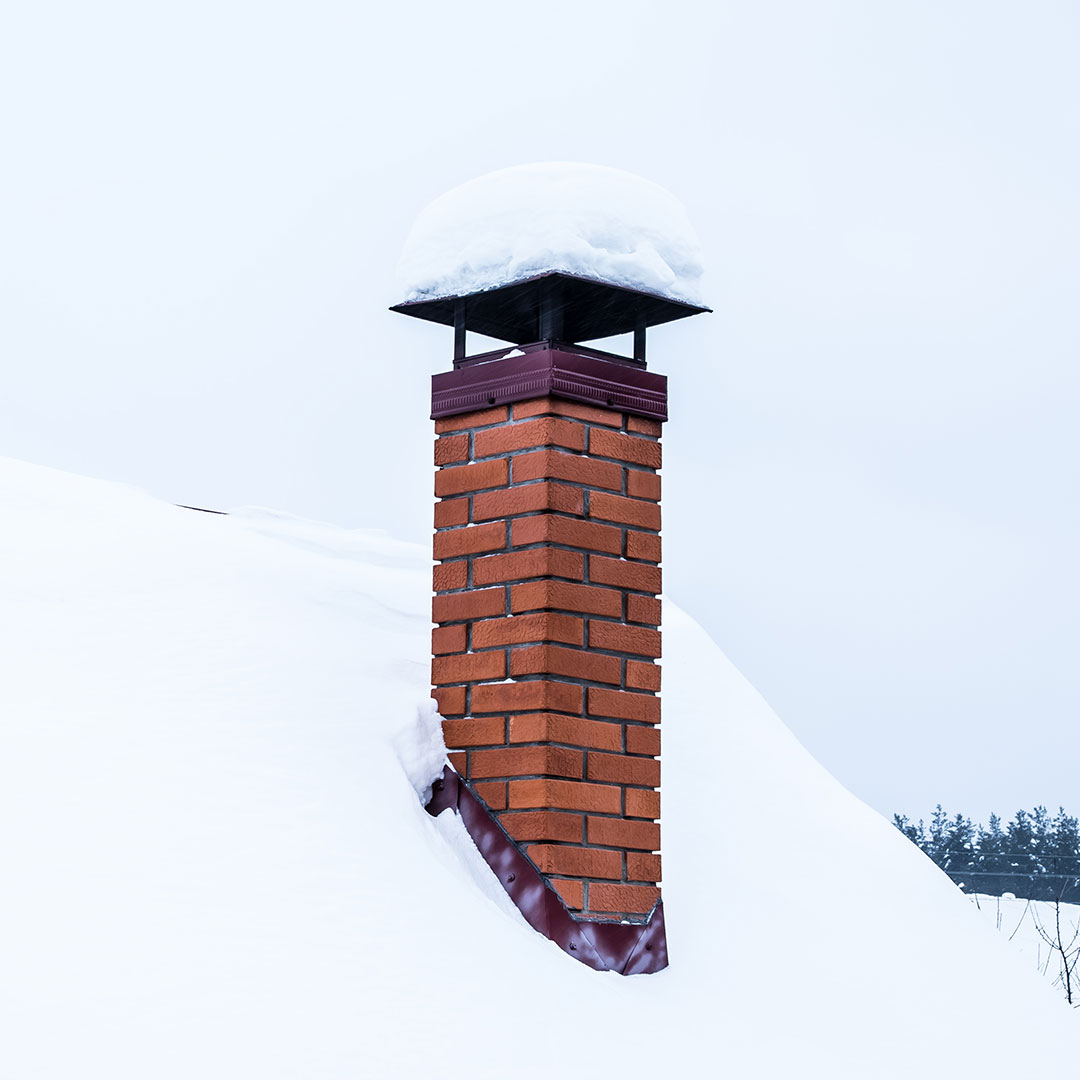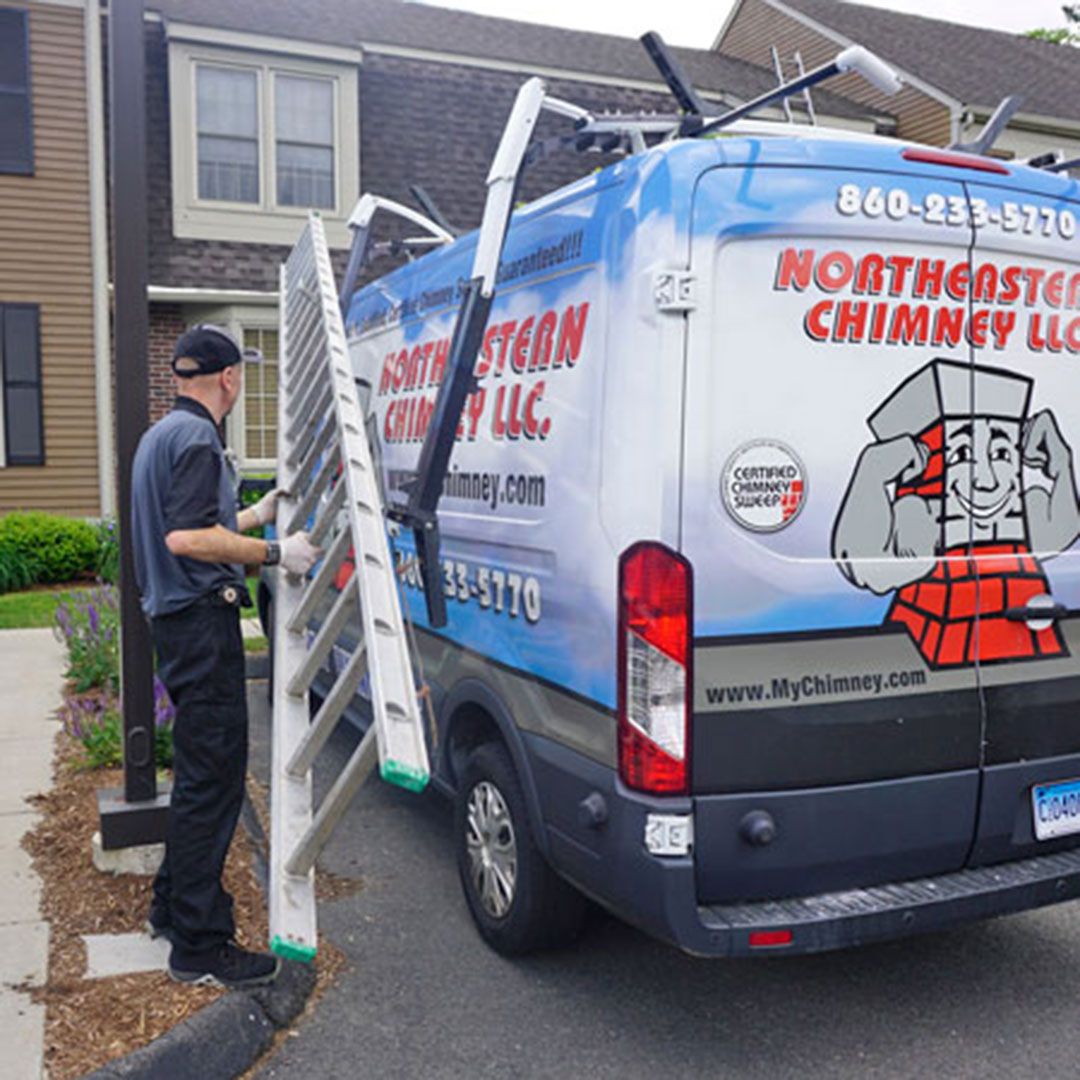Winter’s Wrath on Your Chimney
Many people love winter. There’s the beautiful snow-covered landscapes, the anticipation of the holidays, and staying warm and cozy inside. However, winter isn’t without its challenges, and if your chimney could talk, it would tell you why winter is its least favorite time of the year. In this post, we examine winter’s effects on your chimney and why routine inspection, maintenance, and repairs are so critical.
 Freeze-Thaw Cycle
Freeze-Thaw Cycle
Your chimney is constantly exposed to the elements. In winter, however, snow, ice, and rain are especially detrimental because moisture can seep into the bricks and mortar joints. Once water gets in, it freezes and expands, causing cracks. This constant freeze/thaw cycle can cause bricks and mortar joints to deteriorate to such a degree that the chimney can lean or collapse.
Condensation
The temperature difference between the inside and outside of the chimney during winter can lead to condensation. Besides repeated freezing and thawing of water inside the chimney, the exhaust chemicals combined with condensation can result in a corrosive mixture that can lead to further chimney deterioration.
Cap and Crown Deterioration
The chimney cap and crown are vital components to protect your chimney from moisture and exterior elements getting in, like debris, animals, and leaves. Because most crowns are made from concrete, and caps are made from metal, they suffer from water damage like cracking and corrosion.
Obstructions
Winter storms can cause debris like leaves and branches to fall into the chimney, creating a blockage. Moreover, a warm chimney is an inviting home to many critters who get in and build nests or, unfortunately, die. A blocked chimney is a dangerous chimney, which can lead to toxic gases like carbon monoxide flowing back into the home or a chimney fire.
Masonry Damage
We briefly mentioned this in the freeze/thaw section, but it’s worth expanding on. Think about all the potholes you notice on the roads once spring arrives, and it’s easy to see why winter weather is so detrimental to your chimney’s masonry materials. Winter can cause brick spalling, efflorescence, cracked brick and mortar joints, and mold and mildew. In addition to masonry damage, when moisture penetrates the chimney, it can cause metal components like the firebox and damper to rust.
Why Hiring a Pro for Repairs Is Non-Negotiable
If you’re handy around the house, you might think about doing minor repairs on your chimney yourself to save a few bucks, but here’s why you should leave it to the pros.
More Experience
Sure, you might be good with tools and know a thing or two about fixing things, but masonry repairs require experience to ensure it’s done accurately. Moreover, chimney repairs often require specialized tools and knowledge of advanced repair techniques — something you can’t get watching a YouTube tutorial.
Identifying Other Problems
You may be able to look at your chimney and see deteriorating mortar joints, but a professional will perform a thorough inspection and can identify underlying problems that could become hazards in the future if you don’t deal with them now. Pros have the training to spot issues an amateur might miss, which can save you money and aggravation down the road.
Understanding of Building Codes
If your chimney needs major repairs, you may have local building codes and regulations you must adhere to. While it may not matter to you now, it will be an issue if you sell your home. Professionals know the local codes and regulations to ensure your chimney repairs comply.
Safety
Working on a chimney typically involves heights and requires safety protocols to ensure nobody gets hurt. There are countless stories of homeowners falling off the roof and getting seriously injured trying to affect repairs.

The bottom line is to leave this dangerous work to the pros, who know what precautions to take to keep them safe.
Time and Cost Efficiency
Finally, hiring a pro might seem like an added expense, but it is often more cost-effective in the long run. Professional chimney contractors can get the job done more quickly and efficiently and prevent repeat repairs caused by amateur mistakes.
Call Northeastern Chimney Today
If your chimney has seen better days, call the experts that Central Connecticut residents trust most. Our technicians are certified by the Chimney Safety Institute of America, and we’re active members of the National Chimney Sweep Guild, so you can be confident our work is accurate, and your chimney is safe. And best of all, regardless of what service we provide, we won’t be finished until you’re 100% satisfied. Book your appointment today by calling 860–233–5770.
The post Winter’s Wrath on Your Chimney appeared first on .
This post first appeared on https://www.mychimney.com






 Chimney Flashing Installation
Chimney Flashing Installation